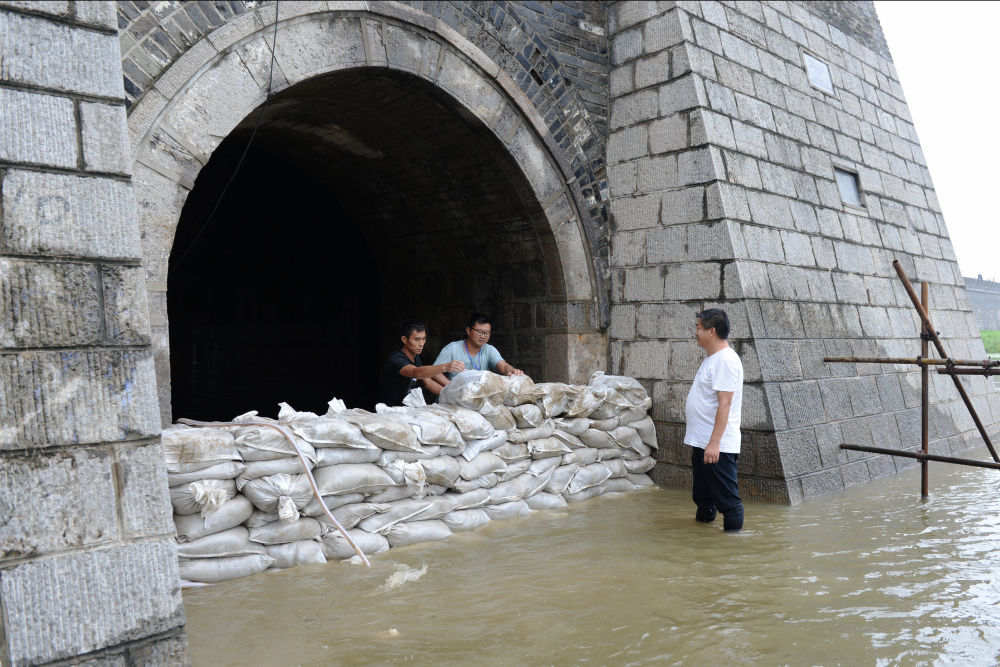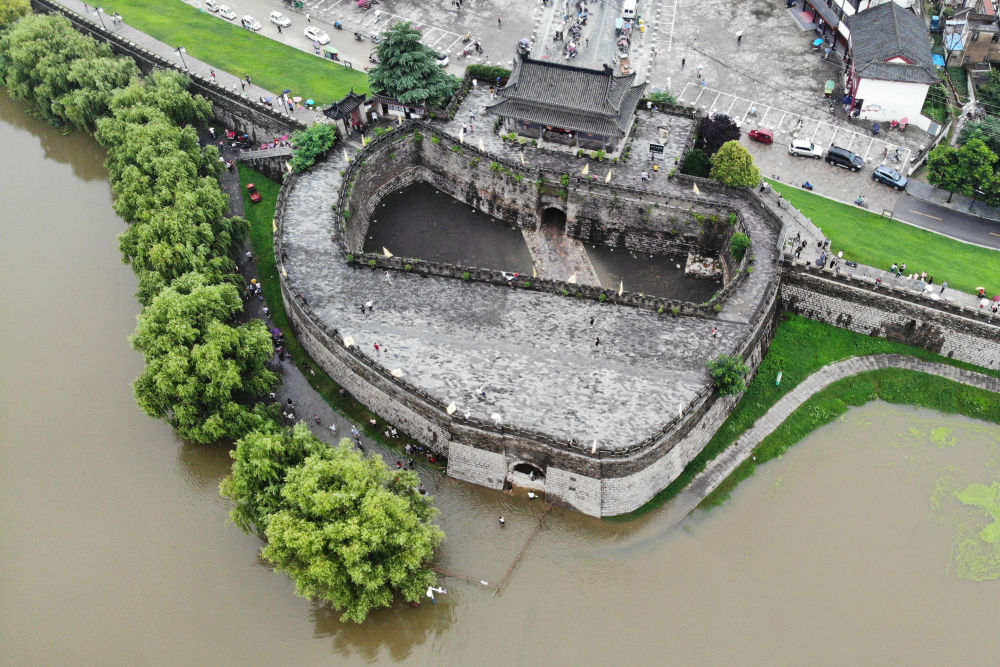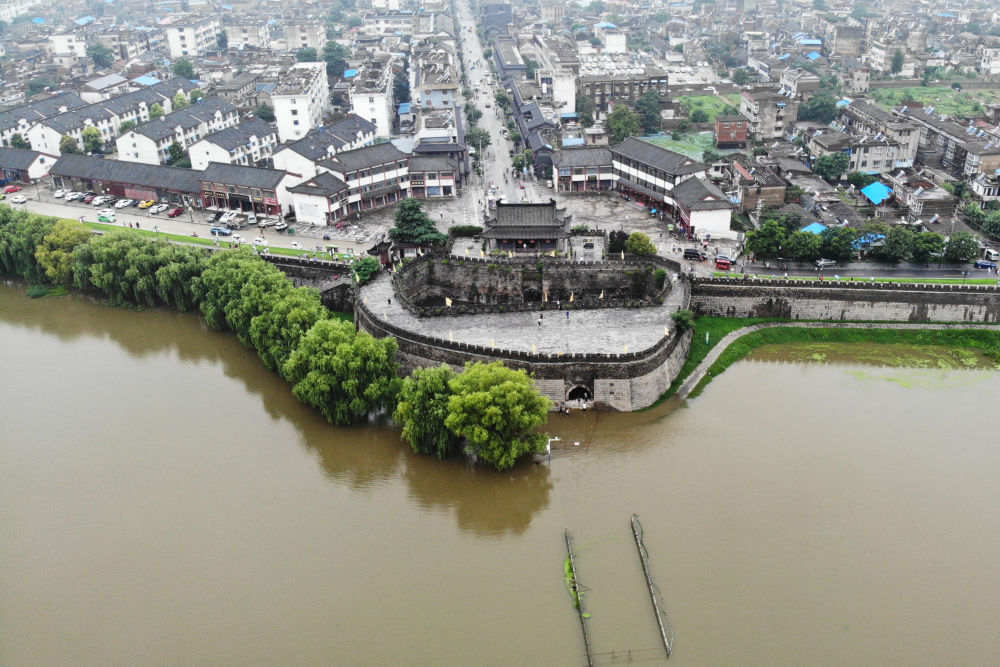The old town walls of ancient flood-resistant city in E China's Anhui
People's Daily app
1595162970000

Affected by the recent heavy rainfall, the city moat of Shouxian county, East China’s Anhui Province, witnessed a soaring water level. To prevent river water from flowing into the city, the Shouxian County Flood Control and Drought Relief Headquarters ordered the Binyang Gate of the old town to be blocked on July 18. (Photos: Xinhua; compiled by Yang Shiqi.)

Flood control personnel used sand bags to block the Binyang Gate in the old town of Shouxian County.

Flood control personnel used sand bags to block the Binyang Gate in the old town of Shouxian County.

Shouxian Old Town is like a "city on the water." In ancient times, locals put a lot of thought into the design of the town walls in order to prevent flooding. The ancient town had four gates. The doorways were made of bricks and stones, and its upper part had a semicircular arch structure. The old town walls were packed earth, with a brick exterior. The city foundation was built with stones.

The Binyang Gate was designed not to be aligned with the inner gate. This ingenious design not only was out of military defense considerations, but also has an important role in flood control. If the flood breaks through the outer door and enters the city, it will change the flow direction because of this design, thereby reducing the impact on the inner doors. The picture shows flood control personnel filling bags with sand and preparing to block the Binyang Gate.

Flood control personnel transported sand bags to the Binyang Gate in the old town of Shouxian county.

City flood control has attracted much attention since ancient times, and building walls was an effective method for the ancients to prevent floods. According to experts, the history of the ancient town walls could be traced back to the Warring States period.


